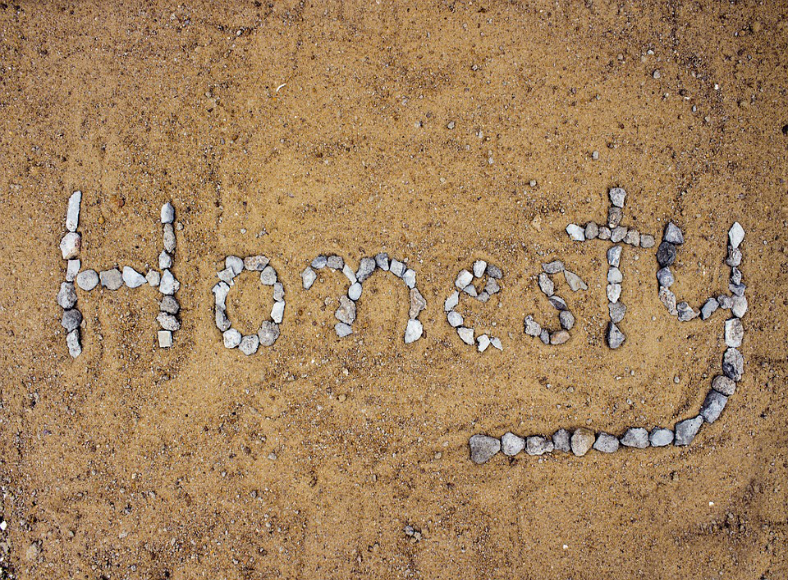The world of businesses is without dull moments, and with a lot of competition, it’s not enough that you rely on common marketing strategies such as business flyers and posters to get yourself noticed by the public. If you really want to stand out, you will need to go the extra mile in trying to get yourself recognized. One very effective way that you can do this is by telling a short but informative story about how your brand started.
But how are startup stories of brands relevant to establishments? These stories actually narrate how the founders of the establishments initiated their businesses and how they were able to develop it to come up with something that is both successful and respected. This way, it can contribute in building the brand’s image as well as help them get a positive impression from the public.
But startup stories aren’t just meant to be read by the prospective clients, they are also meant to be read by other establishments who are looking for potential business partners. Most businesses prefer to make partnerships with those that they can relate to with regards to their history or the nature of their business. If you are planning on writing your own startup story for your brand, then you will need all the help possible to be able to capture the public’s trust.
Components of the Startup Story
- The startup story should always focus on the members of the team who have gathered to be able to create a set of awesome products and services as an outcome. The story should also include the team’s personality and where they stand according to their customers’ perspectives. And, it should speak about each member’s credentials and experiences in their respective fields, and how it became relevant in contributing to the team.
- The startup story should narrate why you and your team felt motivated to establish your own brand. There should also be an explanation as to why you believe that your products and services should be made available on the market. It should always be convincing enough for the readers to believe that they will be able to benefit from your products and services.
- And since you are already aware of the existence of competition, your startup story should tell people why your brand is special and different from the others. It should answer the public’s concern with regards to why you think your brand’s products and services are far superior than the ones from competing brands. The readers should find out about the edge that you have over other brands.
Before Writing the Startup Story
1. Refer to Startup Stories of Successful Brands
Same as when you’re making a logo design or any other marketing tool that businesses use for promoting themselves and the products and services that they are offering, you may also want to gather ideas from other brands’ startup stories. Just make sure to only “gather ideas” from their startup stories and not copy it in any way—that will only lead to people not trusting your brand as well as get you into a lot of trouble. To guide you on what to watch out for from their startup stories, just remember these two simple things: What (they included on the story), and How (they told their story).
2. Answer the “Why” Question
This is just basically answering why you wanted to enter the business in the first place, and why you think your brand is capable of reaching the same level or maybe surpassing other establishments in the competition. You may include here your inspiration behind your brand and how long it actually took you to get your brand started. But don’t limit yourself to answering only those “why questions” that we used as examples, you can actually make your own questions and it is totally up to you as to how many questions you would want to ask about your brand. The important thing about this is that you would be able to provide yourself with a basis for your story.
3. Know That You Can Empathize with the Readers
Before you actually proceed to writing your startup story, keep in mind that the story is not for yourself but for the prospects. What this means is that while the focus of your story is about you and how you were able to put up your brand, you should always look at the situation in other people’s perspective. Put yourself in their shoes and ask yourself why you would want to avail on the products and services of this particular brand. Or for establishments looking for business partners, also put yourself in the shoes of the other company and ask yourself why you would want to initiate a partnership with this brand.
When Writing the Startup Story
1. Follow the KISS Way of Narrating
What do we actually mean when we talk about the KISS concept of storytelling? KISS is an abbreviation that stands for “Keep It Short and Simple.” Regardless if you were able to come up with a lot of “why questions” and you were able to provide answers to each one, as mentioned earlier, the answers to those will only serve as basis to the story. We are now living in a world where almost everything moves at a fast pace, and you wouldn’t want to waste the reader’s time in reading your startup story. You will definitely need to trim down your story as short and simple as possible while still being informative and relevant. But how can you measure whether or not your story is short enough? Read your own startup story, and if you are not able to finish the entire thing in less than 10 minutes, then you will need to shorten it.
2. Make Multiple Possible Drafts
Have you ever tried making a business greeting card? It’s never enough to write just one version of your message, there has to be other alternative versions to choose from. We know that it could get quite tiresome to write a startup story for your brand, but just keep yourself motivated by looking forward to how it can contribute to your brand’s success if you are able to pull it off. Make various drafts of your startup story, but that doesn’t mean that you will need to make up a fictional story for the other possible drafts. What this means is that while the story can only go one way, you can tell it through different versions depending on which part of the story you would want to highlight or how you can actually make the story more interesting to read.
3. Honesty Will Always Be the Best Policy
You and many other people may be tempted to include non-factual elements to the story to make it sound even more interesting, but just take our advice: Don’t. If you want to exaggerate your story a little bit to prevent it from sounding too dull, just keep it realistic and honest as possible, and don’t forget the KISS concept. Your story can help build people’s trust in your brand, and providing them with made-up stories will only break that trust and even destroy your reputation. Just a reminder: Keep it simple, and keep it honest.
After the Startup Story Is Written
1. Never Forget to Proofread
The simple act of proofreading your startup story can go a very long way. Just imagine what impression it could get from the reader if ever they see a mistake in spelling or grammar. When you are writing something, especially if you intend to have it read by thousands of people, make sure to proofread it not just once but many times. Experts would even recommend that you actually proofread your work while in the process of writing it. People may not be perfect but your story needs to be, which is why it is very important never to forget to check for any errors. A perfectly written startup story will only show how dedicated you are to your business and how much you want your brand to grow and be recognized. But don’t settle to proofreading just your startup story, you should also do it on other tools that are meant to be read by prospects, including brochures, postcards, and formal invitations.
2. Seek the Advice from Experts or Your Colleagues
“No Man is an Island,” we have probably heard that line a million times already, but no matter how repetitive it may get, we can actually relate to it since it speaks about the nature of humans. As much as we would want to be independent, no person is self-sufficient and it is in our nature to always rely on others. The same thing can be said when it comes to businesses, wherein for it to be successful, its employees will need to work together for a common purpose. When writing a startup story for your brand, you don’t have to take sole responsibility of the task and you can actually ask assistance from coworkers or other people, you may even want to have them read your drafts and ask for their opinion.
3. Don’t Shy Away
Even with the existence of a lot of competitors, you should never be ashamed of showing off your startup story. Didn’t you write it so that the public could read it in the first place? Make sure that you will be able to display your story predominantly on your website, social media page, marketing tools, and even somewhere on your product packaging designs, and always be consistent in the telling of your story. Let the world know how proud you are with your story and your brand itself that you are not holding back in trying to connect with them. This way, your reputation will be heard and you will not only be able to connect to prospective customers but also to potential partners, investors, and those who are interested to work under the brand.
Related Posts
Librottiglia Unique Wine Packaging Designs
49+ Printable Christmas Template Designs – PSD, AI, Word
15+ Christmas Party Invitations
Key Elements of Brand Identity Design
Top Trending Designs for Typography in 2023
7 Blog Design Trends Dominating 2023
How to Create Appealing Instagram Stories that Grab Attention
Advertisement Design Trends 2023
Best Designs for Album Covers 2023
12+ Best Web Designs for 2023 – Word, PSD, AI, EPS Vector
Top Best Font Style that Can Be Used in 2023
Best Digital Design Trends of 2023
Magazine Design Trends 2023
Top UX Design Trends 2023
Evolution in Graphic and Print Design Trends 2023








